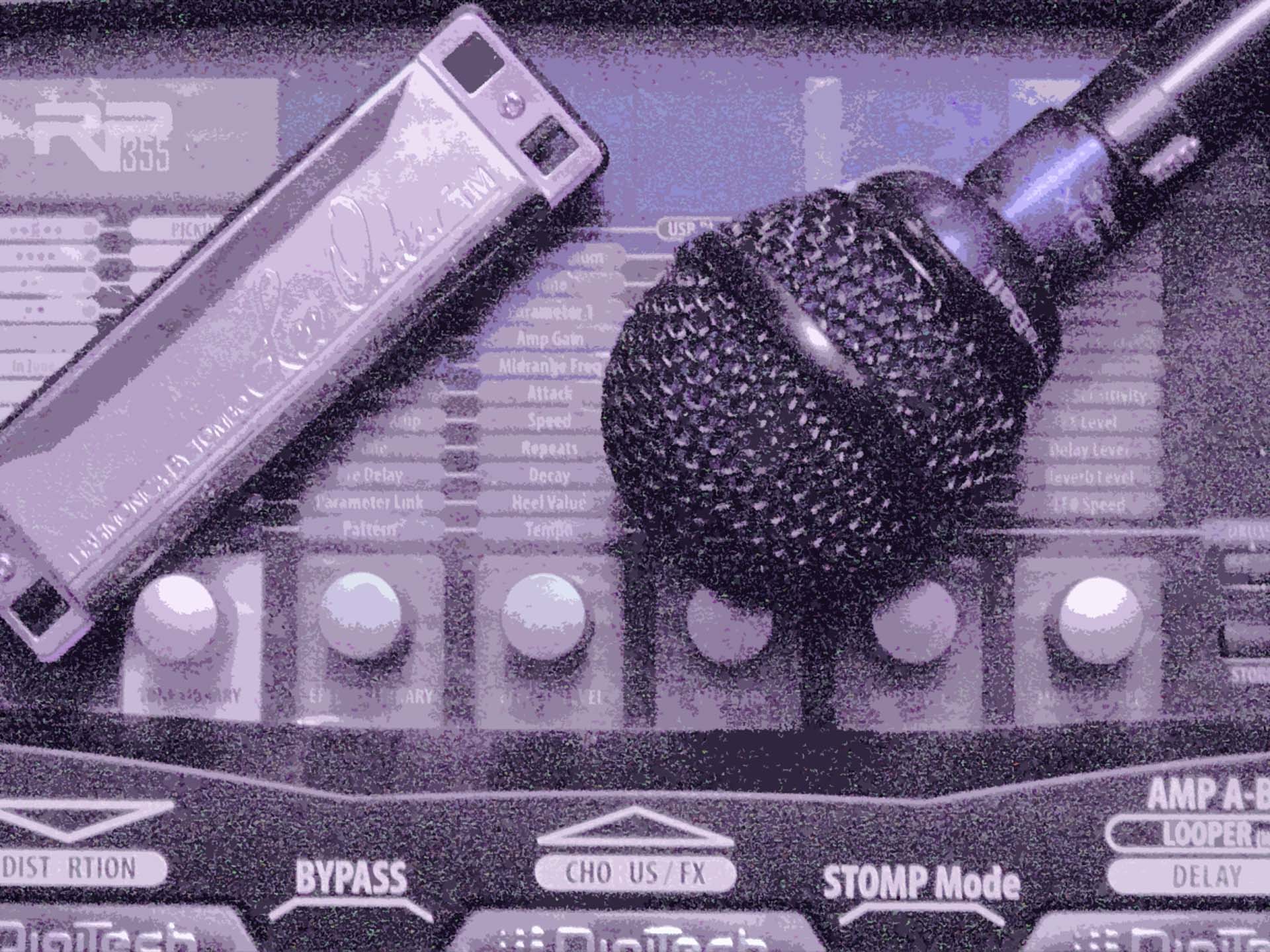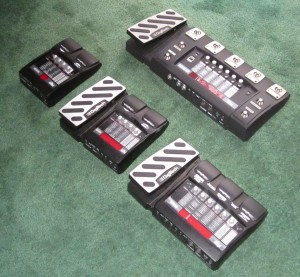
RP tip #19: setting the RP up so you can play it like an organ
All the RPs from the 150 on have a very nice rotary speaker effect, which is a good starting point for making convincing organ sounds. So the first thing to do in setting the RP up for sounding like an organ is to choose a patch with a basic tone that you like, then set up a rotary speaker effect with the expression pedal controlling either speed (of speaker rotation) or FX on/off. (Of course, all my patches for Digitech RP that use a rotary speaker effect have the expression pedal set up in one of those two ways.)
The great thing about using the pedal to control the rotary speaker speed is that when you switch from low speed to high speed, the RP will ramp its speed up or down over a second or two, just like the real thing. If you use the pedal to control speed, set up the expression pedal so the lower limit is something in the range of 10-20 (a nice “slow leslie” range), and the upper limit is something around 45-60.
If you use the pedal to control FX on/off, then set the speed of the rotary effect to 45-60. It’s really cool to go from a fast rotating speaker sound to no FX; it sounds like you’re switching between an organ and an amped harp. Either way–controlling speed or FX on/off–add reverb and/or delay to taste.
Organists don’t just change the rotary speaker speed; they adjust tone too. This can be done on an RP350/355 by setting amp gain and/or treble EQ lower on the A channel than the B channel, or using a different amp model on each channel. You can then switch between a darker or brighter/cleaner or crunchier sound as appropriate with a single footpress on the A/B channel switch, without having to reset the rotary speaker speed.

You don’t have an A/B channel on any RP besides the 350/355, so for other RP models you need to set up patches side-by-side on the RP with the same FX setup and different amp/cab/EQ settings. The basic principle, of course, is contrast. If one patch sounds dark and reverb-laden, the other should sound different to at least one of those aspects. And of course, you can string together a long set of organ sounds in sequential patches if you want to make a night of it.
On an RP150/155 (top left in the photo), you don’t have an expression pedal, and even if you add one it won’t control rotating speaker speed. So you have no choice but to use a string of patches to represent different “organ” tones, even if you just want versions with different rotary speaker speeds (fast/slow/off are the usual choices). The lack of real-time control over rotary speaker speed is the main reason why a 150/155 isn’t the top choice for playing organ sounds, and if realistic organ tones are very important to you, I recommend that you start with an RP255 or RP355. If you want a bunch of organ sounds (plus lots of other cool stuff) ready to load when you get the RP, check out my patches for Digitech RP.
Tags In
Related Posts
1 Comment
Leave a Reply
You must be logged in to post a comment.
WHAT’S NEW
Categories
- Audio/Video
- Blog
- Blue Future
- Digitech RP Tricks and Tips
- Discography, CDs, Projects, Info, Notes
- Featured Video
- For the Beginner
- Gallery
- Hunter's Effects
- Hunter's Music
- Huntersounds for Fender Mustang
- Meet the Pros
- More Video
- MPH: Maw/Preston/Hunter
- My Three Big Contributions
- Player's Resources
- Pro Tips & Techniques
- Recommended Artists & Recordings
- Recommended Gear
- Recorded Performances
- Reviews, Interviews, Testimonials
- The Lucky One
- Uncategorized
- Upcoming Performances
- Zoom G3 Tips and Tricks

I finally figured that one out. It took me a while to learn how to set the speed for the high and low positions but I finally did it. It sounds okay. It kind of adds that modeled amplifier sound. A Ventilator or something might work better but it’s not bad for a substitute if you’re playing a keyboard. If you have an actual Hammond or a good emulator like a Nord you’d probably need something better. A real Leslie would be best.